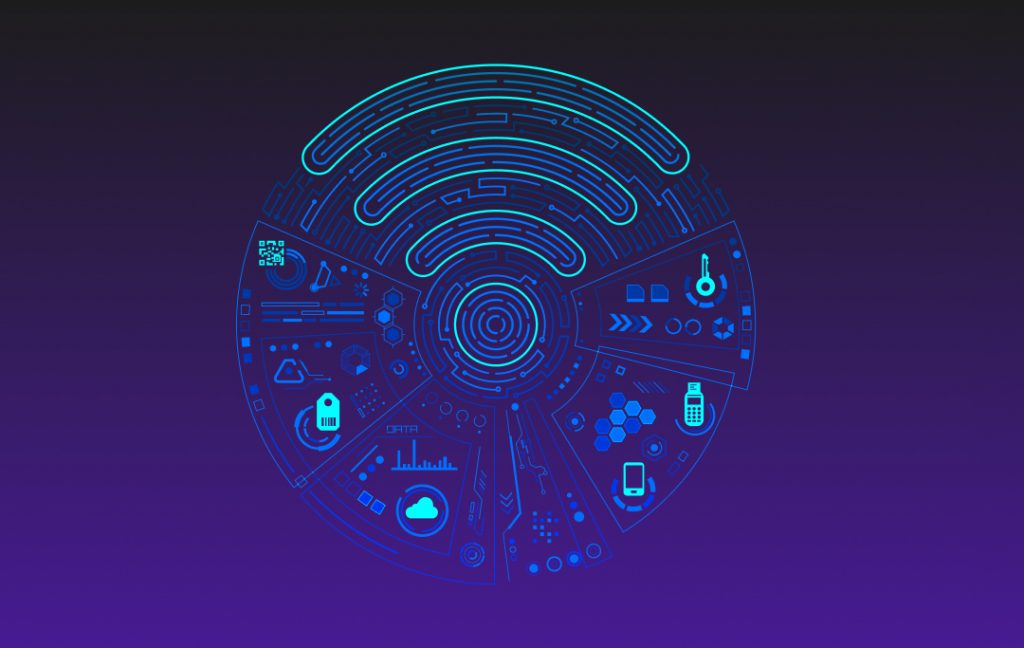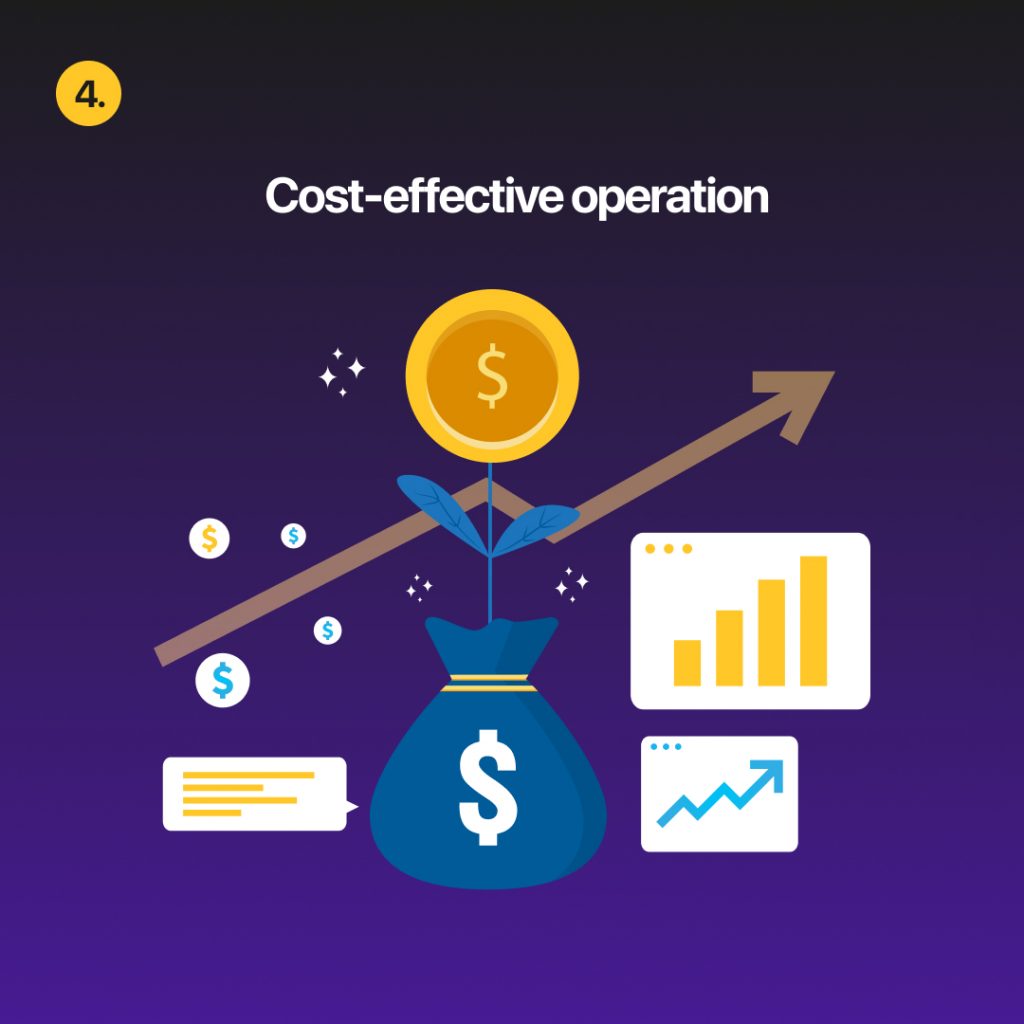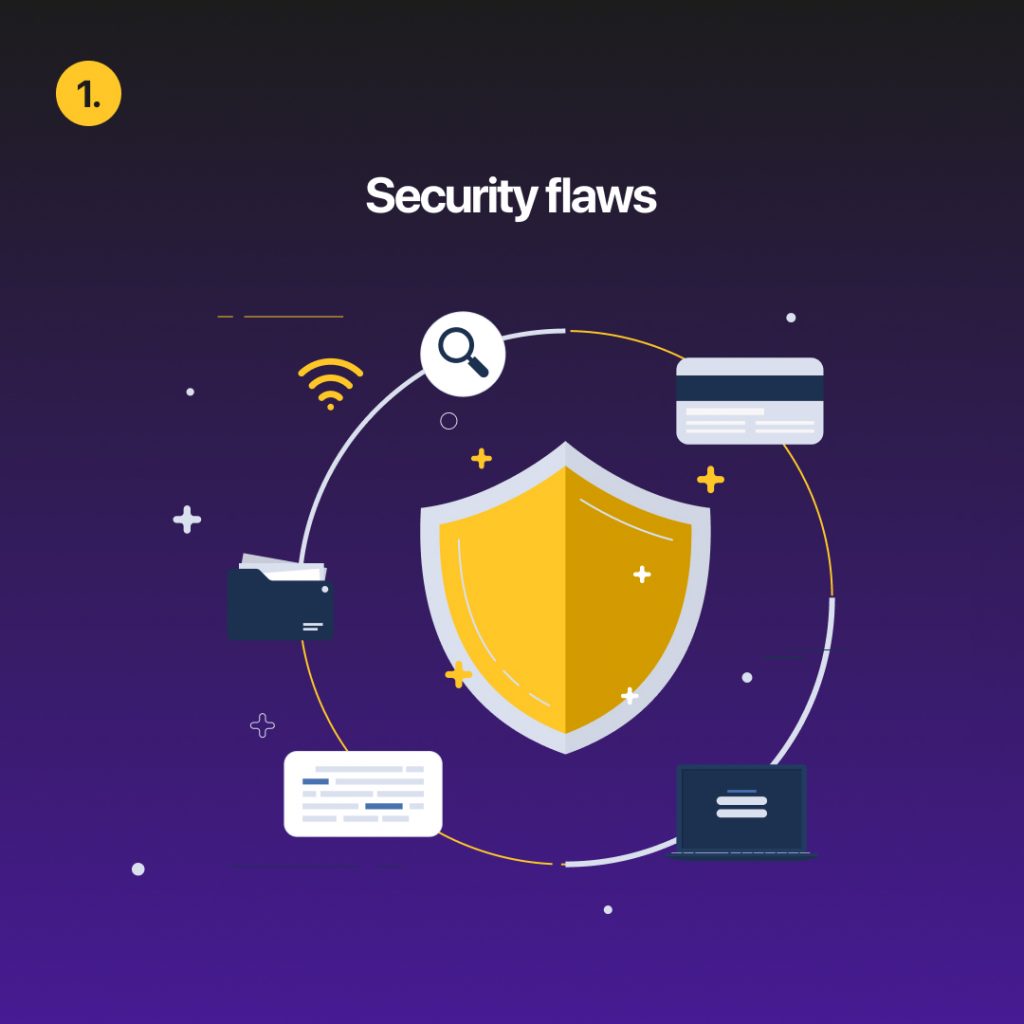
Businesses can benefit from the Internet of Things (IoT) in a variety of ways, including lower operating costs, new consumer insights, and opportunities to optimize business operations as the global IoT market is expected to exceed $2.4 trillion per year by 2027, with over 41 billion devices connected to the internet by then.
However, it is not always a happy situation. Some businesses may be hesitant to use IoT devices because they only see their disadvantages.
This brings us to the title of this article: the pros and cons of the Internet of Things.
| Pros | Cons |
| Safer working environment | Security flaws |
| Efficient operation management | The learning curves |
| Better business insights | Less employment |
| Cost-effective operation | Device compatibility |
| Better customer experiences | Complexity |
| Efficiency and increased productivity | Connectivity and power dependence |
Pros
IoT has undergone several major transformations and has evolved over time. Below are some of the major advantages of IoT for business:

Ensuring everyone’s safety is one of the things companies should prioritize, especially in industries that rely on manual labor while operating heavy machinery. For example, in the oil and gas industry or construction work. This is where IoT devices with ultrafast internet 4G connections can help to prevent workplace hazards.
- If employees enter or exit hazardous areas, IoT devices can provide smart alerts.
- If environmental conditions change, IoT devices can alert employees.
- If a storm is approaching, a device could alert employees to seek shelter.
A safer workplace will help to attract new investors, clients, and potential employees. Employee retention will also improve because you will be able to build trust with your employees by providing a much safer working environment.

Another significant advantage of smart device interconnection is automated control over multiple operational areas, such as inventory management, shipping tracking, fuel, and spare parts management.
- For example, RFID tags and a network of sensors are used to track the location of equipment and goods.

Another incredible advantage of IoT devices is their ability to continuously track important data about your workplace efficiency and other critical parameters.
- Retail stores can use beacon technology to adjust their store’s work dynamic in relation to real-time traffic.
- Logistics companies can use internet-connected IoT devices to coordinate delivery locations and schedules to make the best use of vehicles and employees.
Businesses that use IoT to drive organizational modernization reduce the time to market for new products or services and increase ROI. And because more actionable data from the devices are easily accessible, they will add value to the business faster and more efficiently. Later on, this accumulated data will provide you with a great understanding of your company’s strengths and weaknesses, allowing you to make improvements in the long run.

IoT devices can be cost-effective because they help businesses optimize workflows and reduce operating costs by providing real-time data. Devices can notify staff of their status in advance, allowing them to schedule maintenance before it disrupts production.
They can be integrated into larger systems to improve operational efficiency and assist in cost reduction. According to a DHL report, IoT will help businesses save money on production costs on a large scale.
- Effective communication between electronic appliances would save money and energy.
- IoT improves the efficiency of systems by allowing data to be shared and communicated between electronic devices and then translated as needed.
- Smart building systems can track, monitor, and control HVAC systems to monitor building usage and adjust them to take advantage of lower time-of-use costs, resulting in cost savings.

IoT devices enable businesses to track, monitor, uncover, and analyze customer data more quickly than ever.
Businesses can anticipate changes or trends in customer behavior. Personalization based on previous experiences will improve the customer experience with advanced IoT technology.
IoT devices can assist businesses in gathering, transmitting, and analyzing personal data on customers, allowing them to provide a superior customer experience that engages them on a deeper level and increases customer loyalty.

Efficiency and productivity are critical to the profitability of any business. IoT provides just-in-time employee training, increases labor efficiency, and reduces skill mismatches while increasing organizational productivity. And employees eventually have a lot more time on their hands.
One method to use the Internet of Things to boost organizational efficiency is to automate repetitive or time-consuming processes.
IoT devices can manage, monitor, and alert staff of changes in processes or productivity, helping them make smarter decisions about work.
While these are the advantages of IoT, you should also consider the disadvantages of IoT and how they affect you in the real world.
Cons

Inadequate security measures are the most common drawback to the overall development of IoT. And because of IoT’s rapid growth, it is confronted with security and privacy issues.
IoT devices connected to your desktop or laptop increase the risk of leaking personal information from customers while data is collected and transmitted from the IoT device.
The fear of data leaks is always present because smart devices collect and transmit confidential information that, if revealed, can have disastrous consequences such as identity theft, loss of corporate secrets, equipment, or products, sabotage, and so on.

The technical complexity that comes with new technology is one of the drawbacks of using IoT in your business.
What appears to be a simple tool that optimizes our work is actually a very complex process.
To get the most out of this device, it is critical to provide proper training for everyone so that they can use IoT technology to their advantage without causing unnecessary confusion and problems.
Before fully implementing this advanced technology, initial staff training is unquestionably required.

IoT is spreading around the world, which may result in the replacement of monotonous and dangerous jobs and the firing of unskilled professionals. With IoT, daily tasks are becoming more automated, resulting in fewer demands on human resources and less educated employees. This will have an immediate effect on employment.
All of this may contribute to societal unemployment.
Daily activities are being automated as a result of IoT, and there will be less demand for human resources.
As we move closer to the future of IoT, the hiring of professionals will clearly decline.

The IoT ecosystem connects millions and billions of devices but these devices are built by different manufacturers, raising the issue of compatibility in tagging and monitoring.
And as these devices become more complex and sophisticated, compatibility issues begin to emerge.
This compatibility issue may force buyers or users to purchase devices from a specific manufacturer, resulting in a market monopoly.

IoT is a network that connects various devices. A single flaw in the system can have a significant impact. This is the most difficult aspect of IoT, but it holds enormous potential.
Because IoT is such a vast and varied network, a single software or hardware failure can have disastrous consequences. It adds to the complexity of the processes.

Many devices rely on the internet and constant power to function properly. When either fails, the device and everything connected to it fail. Because IoT devices are so intertwined with today’s businesses, when they go down, everything comes to a halt.
Businesses must understand how outages will affect their devices in order to plan ahead of time for outages, which will occur at some point.
A well-planned additional infrastructure is required. And it should include a sufficient number of UPS devices, surge protectors, and other equipment with relevant ingress protection (IP) ratings. Also, in order to reap the benefits of IoT, your company must first provide all of the necessary networking equipment, such as cables, routers, hubs, local data storage devices, and so on
Summary
Businesses can benefit from IoT devices today, but only if they know what they’re getting into. These are just a few of the advantages and disadvantages that will help businesses have a better understanding of what they require and how IoT devices can assist them with a little planning.
It is important to recognize that integrating IoT into a business requires significant effort and skill in order to reap the benefits while avoiding the drawbacks.
That is why, in order to get an effective IoT solution, it is important to only use the services of responsible and experienced professionals. Contact us, and our skilled developers will provide you with effective software products and insights designed specifically to integrate IoT into your business.







